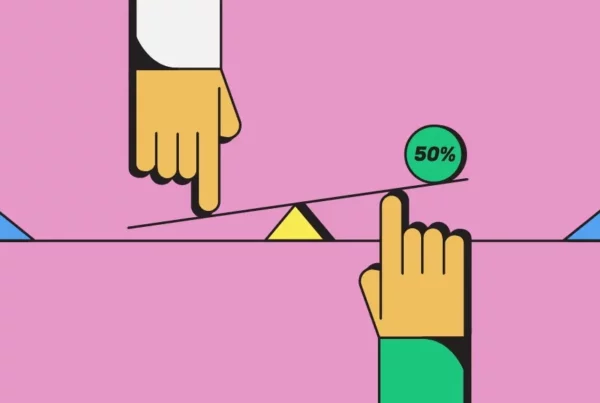News >

Retail Asia Expo: E-tales and the Future of the Consumer Experience
By: Leon Ho, Associate Digital Director, OMD Hong Kong
Born in Hong Kong but raised in the UK, I am a bit of a novice to the local Hong Kong scene, having only lived here for 3 months or so. But whilst I may be fresh off the boat, I am perhaps redeemed by a naïve objectivity. Like with all great cities, there are highly distinct flavours that make up this vertical metropolis. From the hawker style Dai Pai Dong, to the arresting skyline, to the bustling neon drenched streets and the ding-ding of the trams, some of these may be romanticized as stereotype, others are inescapable, but one that is beyond dispute is that Hong Kong is a shopping mecca.
As a gateway to the East, it has for decades provided a launch pad for international brands into the region. Its sheen may have dimmed in recent years, with a decline in visiting mainland Chinese, who are increasingly catered to by cheaper local alternatives or more international choices. But Hong Kong still has the 2nd highest retailer presence in the world, sandwiched in between London and Paris.
In terms of infrastructure it is also one of the most digitally advanced markets in the world with 85% internet penetration and 80% mobile internet usage, after only South Korea and Singapore. Digital is also a fundamental component of how Hong Konger’s shop, with 59% regularly shopping online and 39% making online purchases via mobile. So, it was with great intrigue that I visited the Asian Retail Expo, hoping to catch a glimpse of the latest innovations and solutions.

Photo: techinasia.com
Ostensibly, the most eye-catching displays and demonstrations were those aimed at enhancing the physical shopping experience, to meet the demands of the modern consumer who is increasingly indifferent and instead, more connected to retail digitally. Ranging from robotic and virtual assistants to interactive displays, magic mirrors, connected fitting rooms and smart vending machines, real time personalization driven by AI was front and center. Whether it be recognizing your age, ethnicity or gender to make product recommendations, or displaying styles, stock and inventory to customize and complement looks, these innovations address the fundamental challenge for brands and retailers today.
Are you saving the customer’s attention or are you seizing it?
In the age of immediacy and on-demand culture, these virtual shopping walls, self-ordering kiosks and mobile connected self-payment solutions are geared at fusing the digital and physical, to create a more autonomous shopping experience aimed at eliminating pain points and shortening the customer journey.
Paradoxically, we also need to extend our engagement with consumers. It’s not about lamenting the collapse of brick-and-mortar, but harnessing the power of brick- and-mortar to seize attention where the retail space can act as theatres of experience. It is not just a space to show off your latest products, but it is a space to activate your community, tell them empowering stories, educate them in craft, exhibit creators or throw in a pop-up coffee shop or party. Whether it be for entertainment or better still, with a mindful or self-improving purpose, we need to fuel the social hunger for collecting experiences and bragging rights.
And so, it was to my surprise, that in both respects, Hong Kong feels a little behind the curve, as I have witnessed these innovations, or at least similar ones, already in use in the West, if not fully widespread. This could be aligned with the rapid and sustained economic growth in Asia, which hasn’t necessarily had the same urgency to innovate as somewhere with a flat economy, like in North America and Europe. Now as the rate of growth slows and there is relative economic adjustment, retailers are being forced to differentiate and invest in standout experiences.
Perhaps less shiny and more subtle, but arguably of greater importance, was the undercurrent shift towards e-commerce, conspicuous by the presence of innumerable all in one ecosystem and logistics solutions. Here is where Asia, led by China, truly excels. A digital revolution which coincided with the growth in disposable income and consumption, means that e-commerce is intrinsic to online behavior. Furthermore, where many consumers skipped the PC era, China is now a pioneer in mobile commerce. According to industry estimates, online purchases made with mobile phones will account for 74% of e-commerce in China by 2020, compared to 46% in the U.S. This is not only driven by increased penetration and the influx of new digitized consumers, but also diversity in categories, where everything from organic food, luxury cars, snacks and financial services will be growth areas alongside the usual staple of books and clothing.

Photo: sciclonic.com
Seamlessly integrated platforms make shopping fun and buying easy. In China, news sites, games, videos and e-commerce are all interconnected in the major online hubs with click-to-buy product placements and quick links to payment options. Consumers go to these sites to be entertained, explore new trends or interact socially – as well as to shop. Leading the charge are the all-in-one super apps, most notably Taobao and of course WeChat. Taobao began solely as an e-commerce site, but now offers social and entertainment features. Conversely, WeChat started as a social platform before allowing users to buy and sell products, send money, pay bills, order food, taxis and just about any other facility you can think of.
The focus at the Expo was on tapping into this cross-border market. A virtual arms race, from solutions allowing overseas merchants to accept WeChat payments and further promote its 800 million active users, to equipping retailers with the technology and know-how to enter these e-markets. As the most prominent, Alibaba doesn’t actually carry inventory or buy and sell merchandise, but operates like a virtual mall. In this model, brands own the relationship with customers and Alibaba provides the tools and services for them to connect directly with consumers through online experiences – be it games, videos, live stream talk shows or online communities.
In contrast, Amazon, the key player in the West, focusses almost exclusively on the consumer. It uses data to refine its product based on consumer buying patterns, carrying its own inventory in a virtually unlimited selection, optimized search and recommendation engine, review system and first-rate delivery service.
It is this fundamental distinction that best characterizes the different digital commerce evolutions between East and west. The likes of Alibaba originally had a much broader and deeper ready-made ecosystem from which to draw consumer information not only from their shopping habits, but also from digital media consumption, social networks, search preferences, payment and credit history.
Of course, over the years Amazon has used its reputation and loyal customer base to expand its own ecosystem from e-readers and tablets, to video streaming, original TV shows, movies and live TV, to home assistants and food delivery. The irony is not lost that the world’s most influential online retailer, in its largest ever acquisition, has bought a brick-and-mortar grocer whose stock price and revenue growth has been in decline since 2012. Whilst they may not themselves become theatres of experience, the 431-upper income, prime locations become invaluable distribution points for food as a delivery service. An online market that is projected to grow 15 times faster than the rest of the restaurant business by the end of the decade. Amazon is no longer about selling products, but rather, providing access to a global delivery system for all your consumer needs in an all-encompassing life bundle. It is the commoditization of convenience.
Only time will tell how this compares with recent moves by Alibaba and their launch of Tmall World to connect 100 million Chinese consumers to 1.2 billion products through the Mobile Taobao app. Online retailers are thinking big, and we’re right behind them. Here in Hong Kong, OMD has set up our own alliance with e-commerce experts Fusion, giving our clients exclusive access to their e-tailing technologies. We are incorporating data and content into the e-commerce mix to raise the game locally and match our mainland counterparts.


